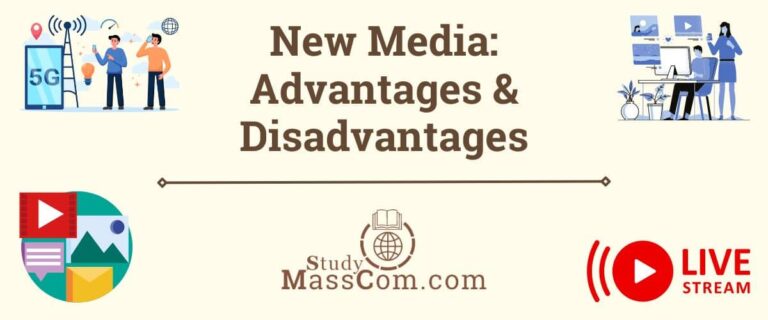Role of New Media in Public Relations
In the ever-evolving landscape of public relations (PR), new media has emerged as a transformative force, revolutionizing the way organizations and individuals communicate with their audiences. With the rise of digital technology and social platforms, PR professionals must adapt their strategies to leverage the power of new media effectively. This SEO-optimized article delves deep into the multifaceted role of new media in public relations, exploring its impact on brand visibility, reputation management, audience engagement, and crisis communication.

Understanding New Media in Public Relations
New media, often referred to as digital or social media, encompasses an array of online platforms and communication channels that facilitate interactive and real-time exchanges between brands and their target audiences. This includes social media networks like Facebook, Twitter, Instagram, and LinkedIn, content-sharing platforms such as YouTube and podcasts, as well as blogs and online forums.
Unlike traditional media, new media allows for two-way communication, enabling PR professionals to engage directly with their audience and receive instant feedback. This shift in communication dynamics has empowered organizations to build more personalized and authentic relationships with their stakeholders.
Enhancing Brand Visibility and Reach
One of the primary advantages of leveraging new media in PR is its unparalleled ability to enhance brand visibility and expand reach. By creating and distributing compelling content through various digital channels, PR practitioners can tap into a vast audience base, boosting brand awareness significantly.
To maximize visibility, Search Engine Optimization (SEO) plays a critical role. By incorporating relevant keywords, optimizing meta-tags, and creating shareable content, PR professionals can improve search engine rankings, driving organic traffic to their websites and content.
Real-Time Engagement and Interactivity
The real-time nature of new media empowers PR professionals to engage with their audiences instantly. Social media platforms, in particular, provide a direct line of communication for brands to respond to customer queries, concerns, or praise promptly.
This real-time engagement not only fosters trust and credibility but also allows organizations to address negative sentiment and manage crises proactively. The ability to interact with audiences in real-time demonstrates transparency and a genuine commitment to meeting their needs.
Building and Managing Online Reputation
In the digital age, an organization’s online reputation is of paramount importance. New media plays a crucial role in shaping and managing this reputation effectively. PR professionals must actively monitor online mentions, reviews, and comments to gauge public sentiment accurately.
Through strategic content creation and targeted messaging, PR practitioners can build a positive online reputation, positioning their brand as a trustworthy and reliable authority in the industry. Additionally, proactive reputation management helps mitigate potential crises and negative publicity.
Leveraging Influencer Marketing
New media has given rise to the phenomenon of influencer marketing, a powerful PR tool that can significantly impact brand perception and audience engagement. Partnering with influential individuals in a specific niche enables brands to tap into their dedicated and engaged follower base.
Influencers provide authentic and relatable endorsements, lending credibility to the brand’s message. This trust translates into increased customer trust and a higher likelihood of conversions, making influencer collaborations a valuable addition to any PR strategy.
Nurturing Media Relationships
New media has redefined the relationship between PR professionals and journalists. Press releases and media pitches can now be sent through email, social media, or dedicated press portals, simplifying the process for journalists to access relevant news and stories.
By fostering meaningful relationships with journalists through new media channels, PR practitioners increase the likelihood of their stories being covered in the media. Engaging with journalists on social platforms and providing them with valuable insights can position PR professionals as thought leaders, resulting in greater media coverage and exposure.
Measuring PR Impact with Data-Driven Insights
Unlike traditional PR, new media offers robust metrics and analytics to measure the impact of PR campaigns accurately. PR professionals can track website traffic, social media engagement, click-through rates, conversion rates, and more.
These data-driven insights enable PR practitioners to refine their strategies, identify trends, and allocate resources effectively for future campaigns. By leveraging data, PR professionals can make informed decisions, optimize their efforts, and achieve a higher return on investment (ROI).
Conclusion
The role of new media in public relations cannot be underestimated in the digital age. From enhancing brand visibility and reach to fostering real-time engagement and interactivity, new media empowers PR professionals to build authentic relationships with their audiences. Through influencer marketing and data-driven insights, PR practitioners can measure the impact of their efforts and make informed decisions for future campaigns.
Embracing new media is no longer optional but essential for a successful PR strategy. By leveraging the power of digital platforms, organizations, and individuals can navigate the ever-changing PR landscape, connect with their audiences on a deeper level, and thrive in the dynamic digital era.
FAQs
The impact of new media on public relations has been revolutionary, transforming the way organizations and individuals communicate with their audiences. With the rise of digital technology and social platforms, new media has brought about several significant changes in the PR landscape.
Firstly, new media has amplified brand visibility and reach. Through strategic content creation and distribution across various digital channels, PR professionals can now tap into a broader audience base, increasing brand awareness significantly. Search Engine Optimization (SEO) techniques further optimize content for search engines, driving organic traffic to websites and content.
Secondly, real-time engagement and interactivity have become paramount. Social media platforms enable direct communication between brands and their audiences, facilitating instant feedback and responses. This real-time engagement fosters trust and credibility and allows organizations to address concerns and manage crises proactively.
Additionally, new media has revolutionized reputation management. PR practitioners can actively monitor online mentions, reviews, and comments, shaping and managing an organization’s online reputation effectively.
Lastly, new media has given rise to influencer marketing, where brands can leverage influential individuals to endorse products or services, boosting brand perception and audience engagement.
In conclusion, the impact of new media on public relations is evident in its ability to enhance brand visibility, facilitate real-time engagement, manage online reputation, and leverage influencer marketing for greater reach and credibility.
Digital media offers numerous benefits in the field of public relations, revolutionizing the way organizations and individuals communicate with their audiences. Some of the key advantages include:
1. Enhanced Reach and Visibility: Digital media provides an expansive platform to disseminate PR messages to a global audience. Through websites, social media, and content-sharing platforms, PR professionals can reach a vast number of people quickly, increasing brand visibility and awareness.
2. Real-Time Engagement: Digital media enables instant and direct communication with audiences. PR practitioners can respond to customer inquiries, address concerns, and engage in conversations in real time, fostering stronger relationships and building trust.
3. Targeted Communication: With digital media, PR professionals can tailor messages to specific audience segments. Social media targeting and email segmentation allow for personalized communication, ensuring that the right message reaches the right people.
4. Measurable Impact: Unlike traditional PR methods, digital media offers robust analytics and data tracking. PR professionals can measure the impact of their campaigns, and track website traffic, social media engagement, and conversion rates, enabling data-driven decision-making for future strategies.
5. Cost-Effectiveness: Digital media is often more cost-effective than traditional advertising and PR methods. Social media campaigns, email marketing, and content creation can yield substantial results with relatively lower investments.
6. Content Control and Storytelling: Digital media allows PR professionals to control the narrative and tell their brand’s story directly. Through blog posts, videos, and social media content, organizations can showcase their values, achievements, and expertise, shaping their brand image positively.
7. Crisis Communication: During times of crisis, digital media enables rapid response and transparent communication. PR teams can address issues proactively, manage rumors, and keep stakeholders informed in real time, mitigating potential damage to the brand’s reputation.
In conclusion, the benefits of digital media in public relations are far-reaching. From extended reach and real-time engagement to targeted communication and measurable impact, leveraging digital platforms is essential for successful PR campaigns in today’s digital age.
Examples of media relations in public relations include issuing press releases to announce company news or events, organizing press conferences to provide journalists with firsthand information, pitching story ideas to reporters to secure media coverage, conducting interviews with media outlets to share insights and expertise, and responding to media inquiries and requests for comments or statements on relevant topics. Media relations aim to build positive relationships with journalists and media outlets to garner favorable and accurate media coverage for the organization or individual represented.

